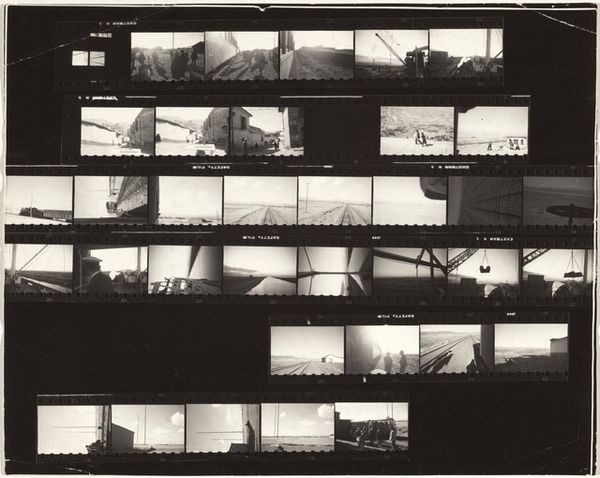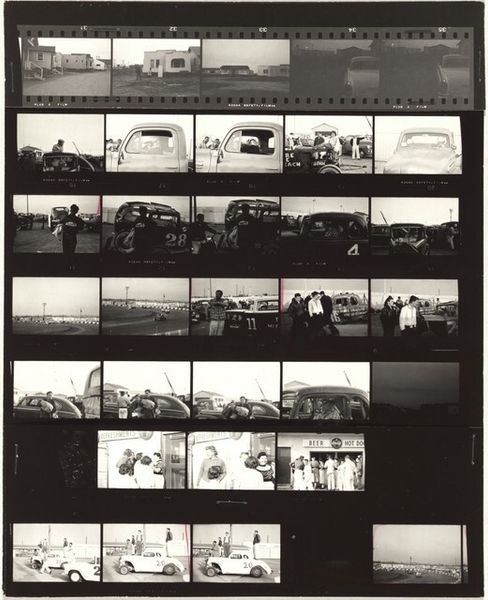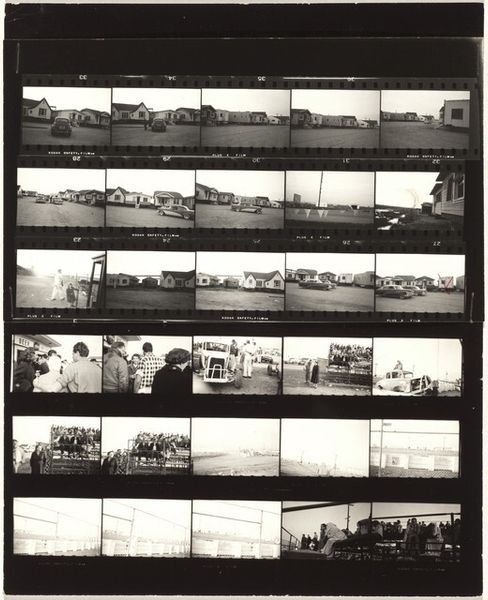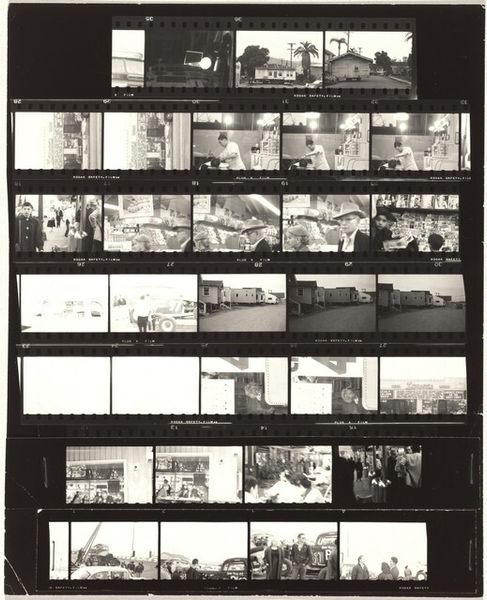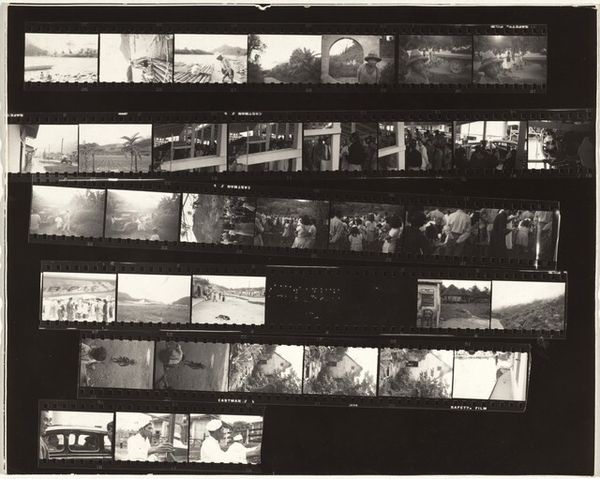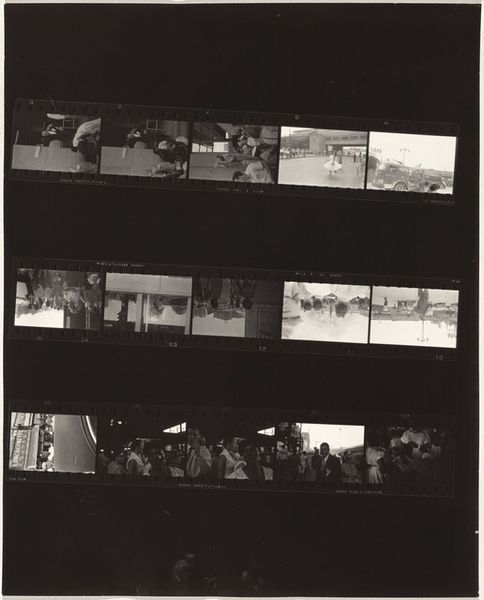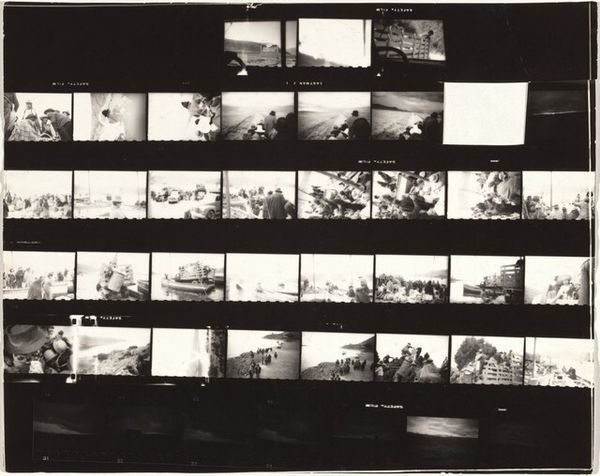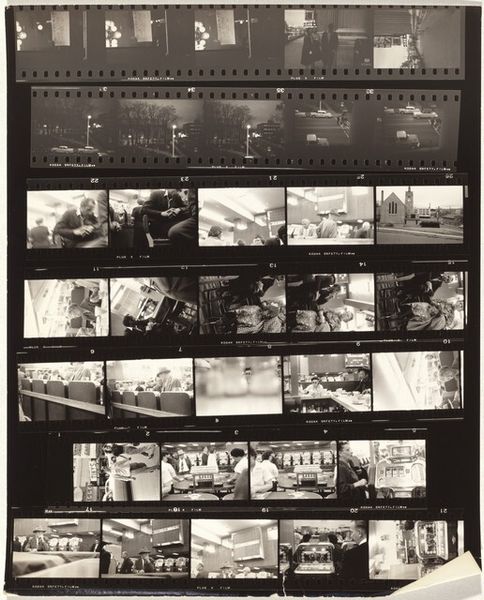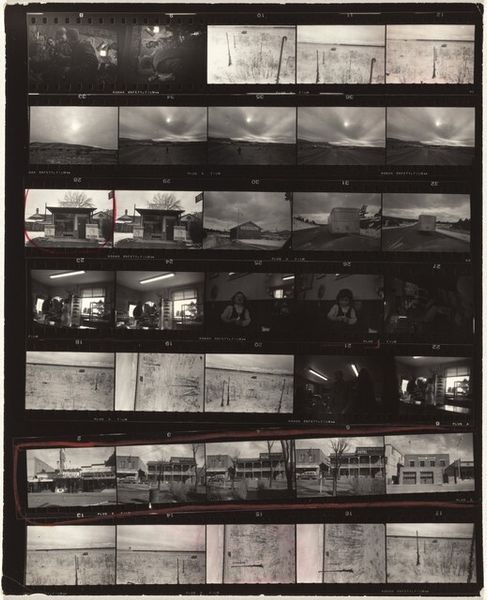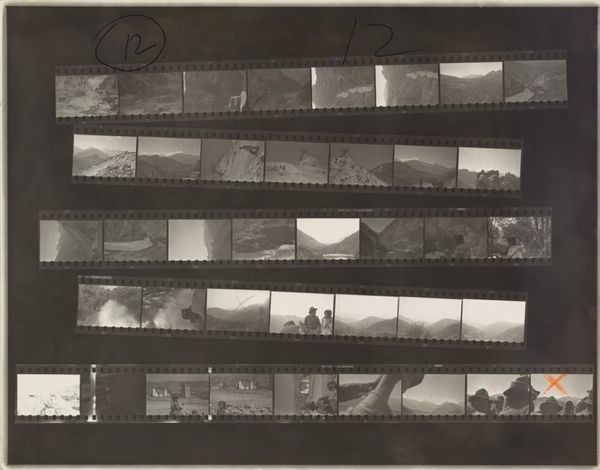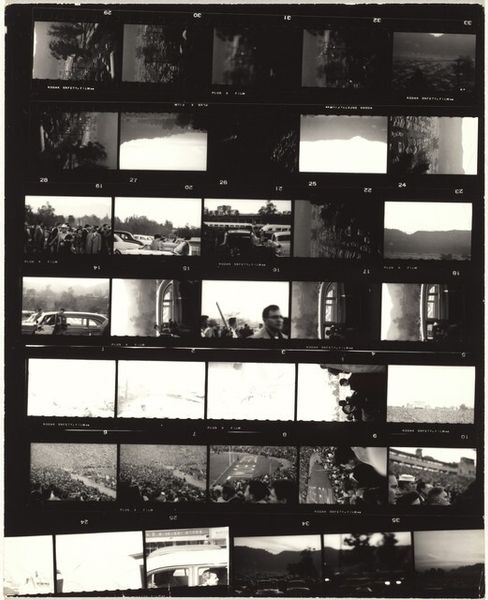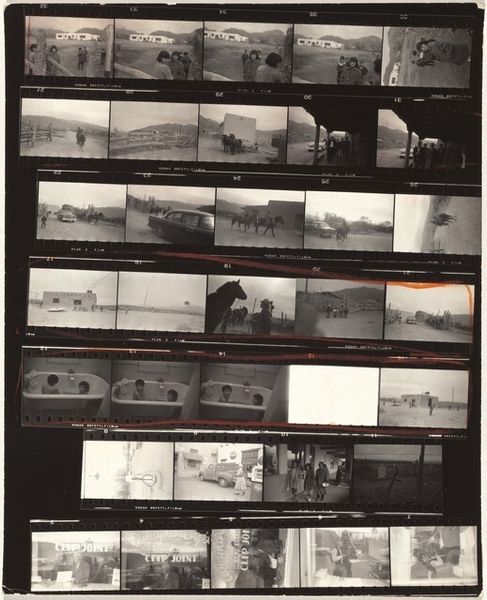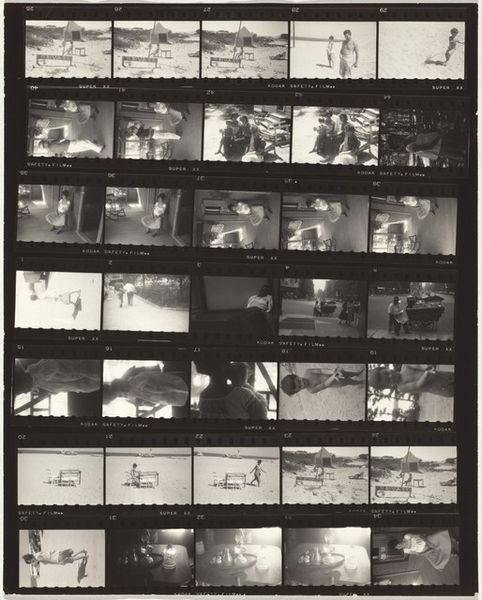
Guggenheim 557A--Stock car races, Palm Springs, California 26 - 1956
0:00
0:00
photography
#
film photography
#
wedding photography
#
landscape
#
street-photography
#
photography
#
pop-art
Dimensions: overall: 25.3 x 20.5 cm (9 15/16 x 8 1/16 in.)
Copyright: National Gallery of Art: CC0 1.0
Curator: This is Robert Frank’s "Guggenheim 557A--Stock car races, Palm Springs, California," taken in 1956. It is a contact sheet. What strikes you about it? Editor: There is something quietly melancholic about the rows of identical houses stretching into the horizon, only to be punctuated by moments of fleeting excitement like car races and public gatherings. It speaks of shared American identity during the period. Curator: Precisely. These contact sheets highlight Frank's deliberate selection process, drawing attention to his methodology. The images hint at postwar consumer culture, the burgeoning automobile industry, and mass entertainment. We should consider the resources and processes of photochemical photography too: the use of a small, handheld camera allowed for street-level encounters that documentary photography wasn't achieving before. Editor: I am also drawn to the implied narrative in the images. There's a story about leisure, labor, and perhaps social mobility here. Those car races, set against the backdrop of quotidian housing, almost feel allegorical. The image brings the mythic ideals about American freedom, in light of postwar life, into play. Curator: And in Frank’s unique vernacular, there's also the materiality of the film itself. Consider that the physical emulsion of the photographic strip gives structure to both a series of related exposures, while also providing information about darkroom production by including visible rebate information from the edges of each negative frame. It presents to us the material fact that each of these images had a manufacturing date or 'expiration date,' if you like. Editor: Absolutely. Seeing the strips laid bare, with all its inherent information from the roll number and manufacturers names makes a point about the intersection of art, commerce, and technology during that time. The mundane versus extraordinary becomes the very character of the image, doesn't it? Curator: Yes, and looking at it now, the way it prompts a dialogue between high art and everyday life becomes incredibly striking when thinking about American culture. Editor: Indeed. Considering the interplay between symbols and materials definitely gives us fresh perspective.
Comments
No comments
Be the first to comment and join the conversation on the ultimate creative platform.
